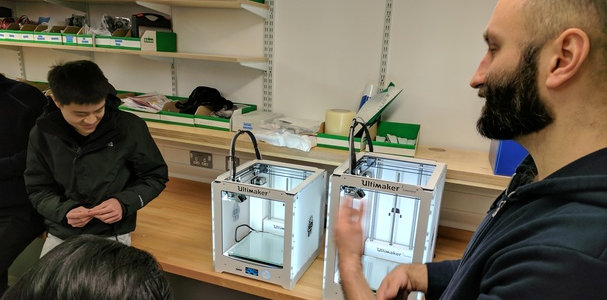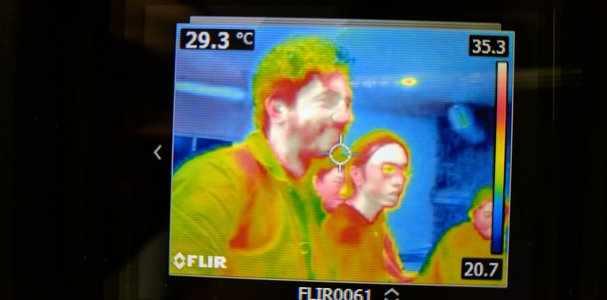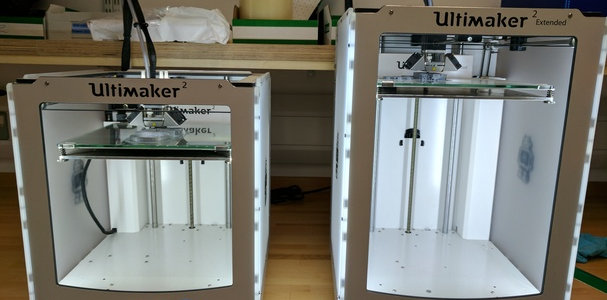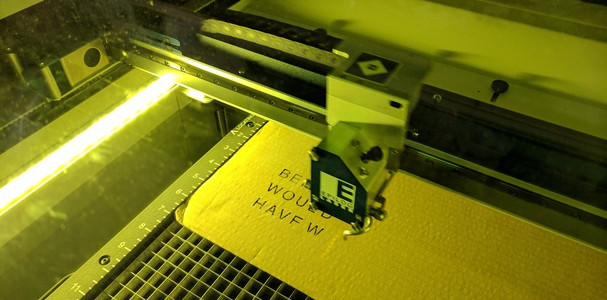New fabrication spaces open at Goldsmiths Computing
by Phoenix Fry & Theo Papatheodorou
Goldsmiths Computing has gained four new spaces this week, with the opening of two fabrication workshops, a specialist teaching room and a staff office.
Situated inside St James Hatcham Building (popularly known as ‘the church’), these new spaces comprise:
G11: a specialist teaching room with suspended powerpoints and workbenches
G12: the ‘tidy’ workshop with a dozen 3D printers, two hi-res microscopes and an Epilog laser cutter
G13:the ‘messy’ workshop for wood-working, drilling, sewing and carving, with a ShopBot CNC mill.
These new spaces place Goldsmiths Computing in the forefront of creative computing, allowing students and staff to design and build physical objects that incorporate digital technology.
The as-yet-unnamed facility builds on the concept of the maker space, hacker space or fablab; this is a social space where students from across the department will meet, socialise and collaborate. It joins our suite of superb facilities that include a motion capture lab, digital studios, games lab and computing labs.
One of the first groups to be trained in the equipment were the students on the MA/MFA in computational arts. Two of their modules this term involves the making of physical objects. Physical computing, the module taught by Phoenix Perry asks the students to program microcontrollers and embedd them inside objects. Students in her class make novel game controlling devices, robots, synths and much more. As part of the submission requirements, students are asked to embedd these inside cases made by such equipment.
Moreoever, in a new module taught by Lior Ben Gai students are asked to write custom software simulating a process in the natural world, generate data from that and use the data to make physical objects. Students are asked to contemplate on and prototype things like: What would a storm look like if it were a statue? How could a whisper be manifested as a 3D object? How would you visualise dark matter using a laser cutter? Students work with code (Processing/C++/Javascript) to generate the data and use equipment in the lab to turn it into objects.
Supported by a dedicated team of technicians the new lab could not arrive in a better time!







































































